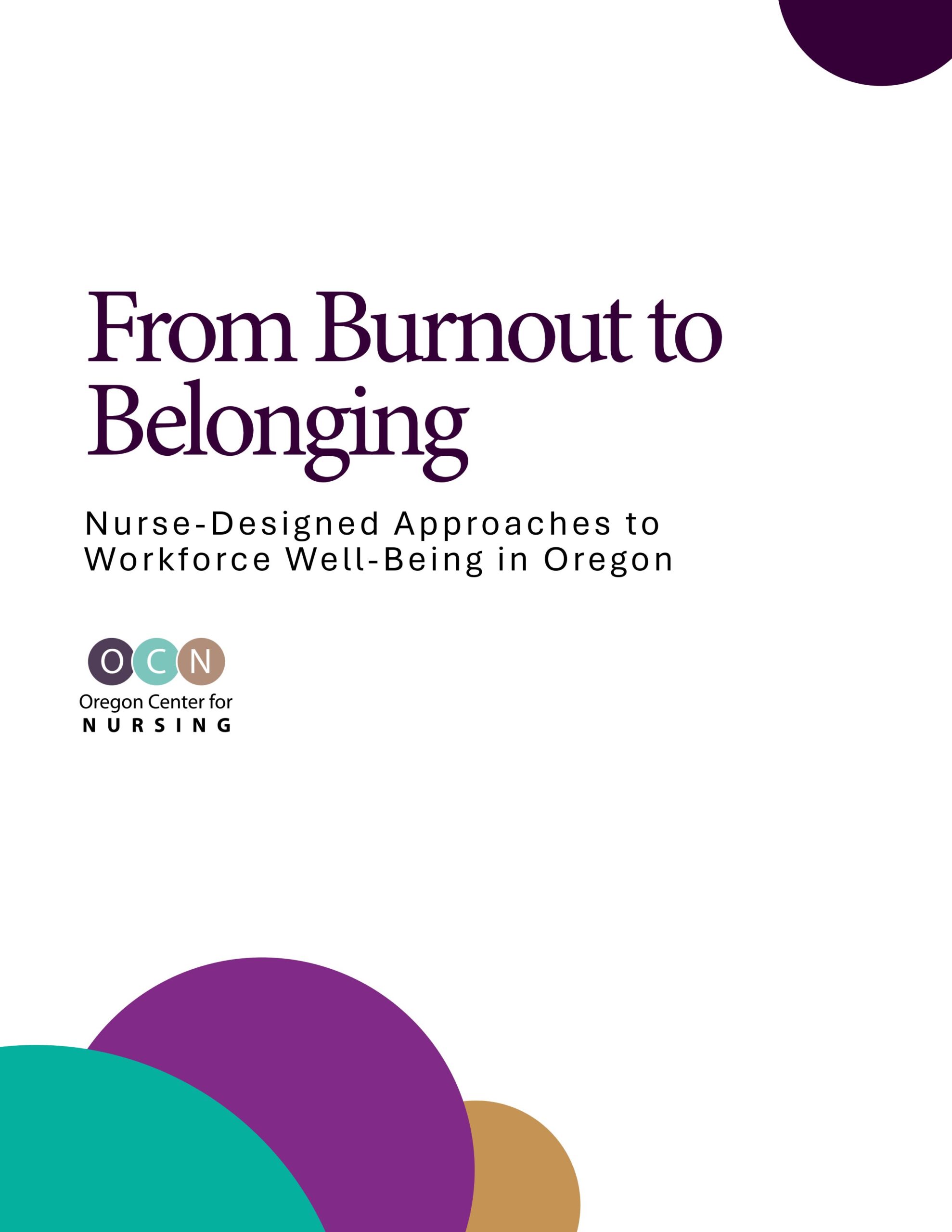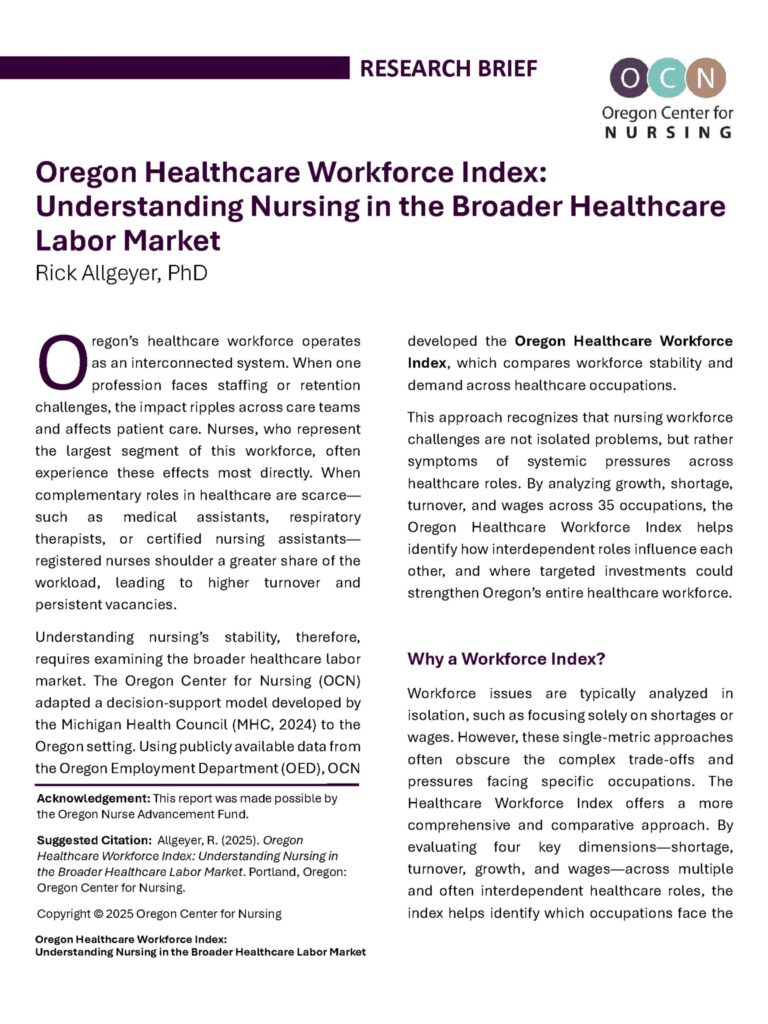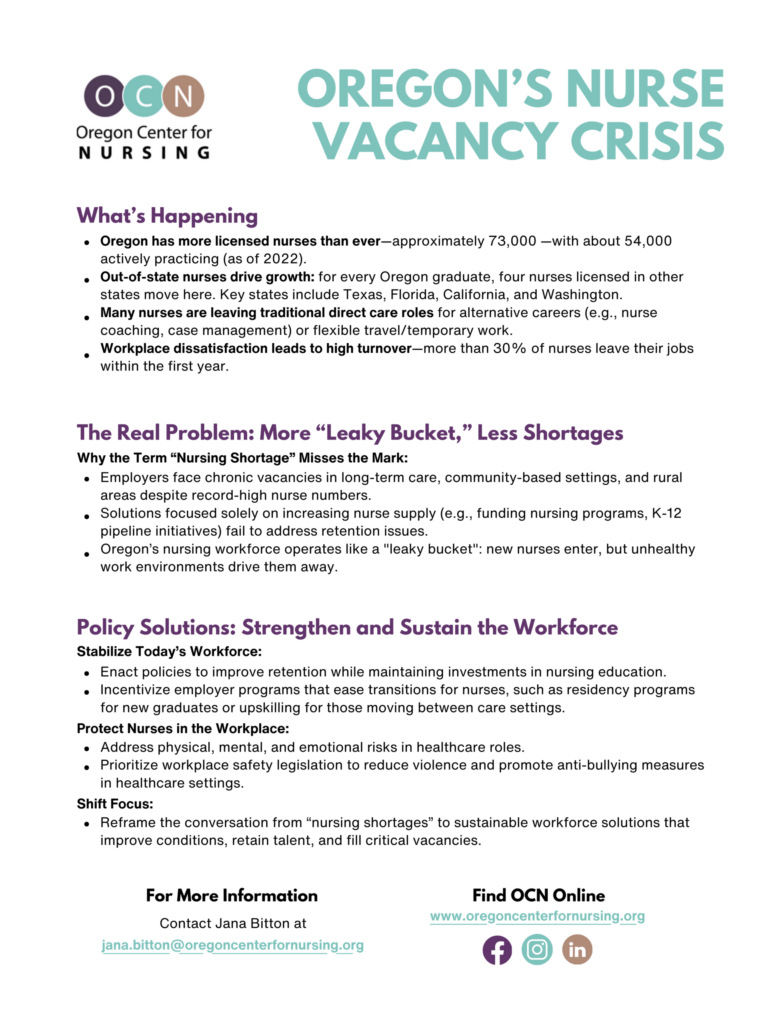Report Spotlight: Translating Nurse-Led Insights into System-Level Action
From Insight to Action in Oregon’s Nursing Workforce
This companion webinar to From Burnout to Belonging offers a focused overview of Oregon’s Nurse Well-Being Project at the close of its grant-funded phase. It highlights key findings from the statewide survey, explores lessons from 18 funded pilot sites, and outlines the systemic changes needed to reduce nurse stress and build a more sustainable workforce.




